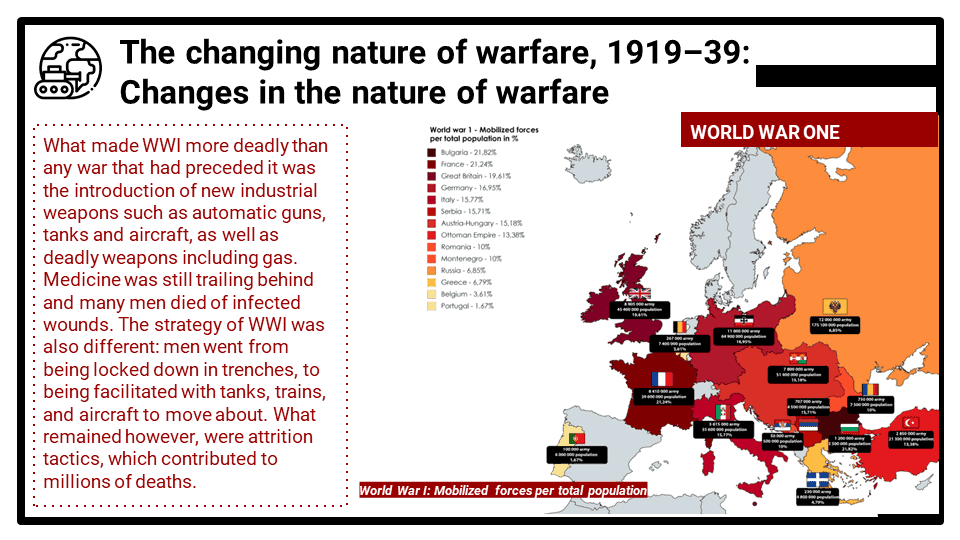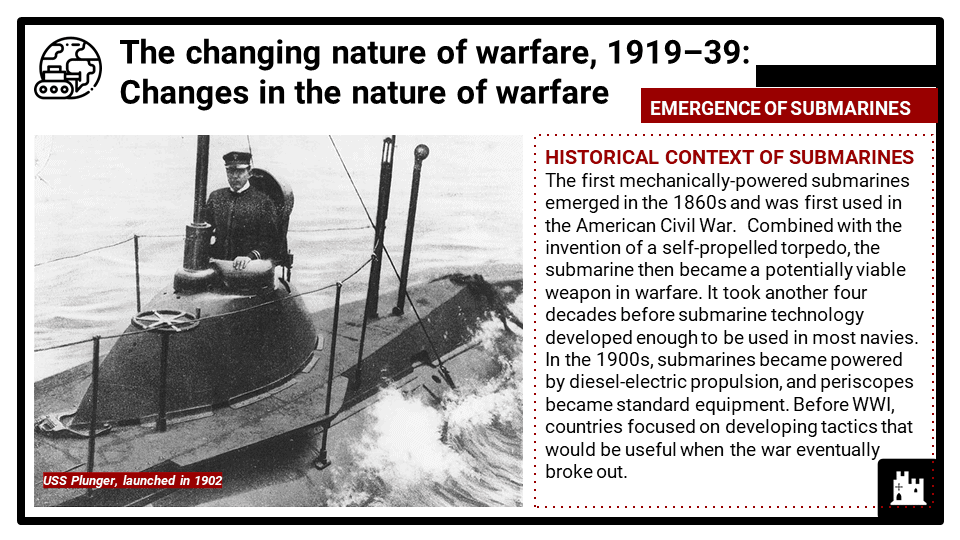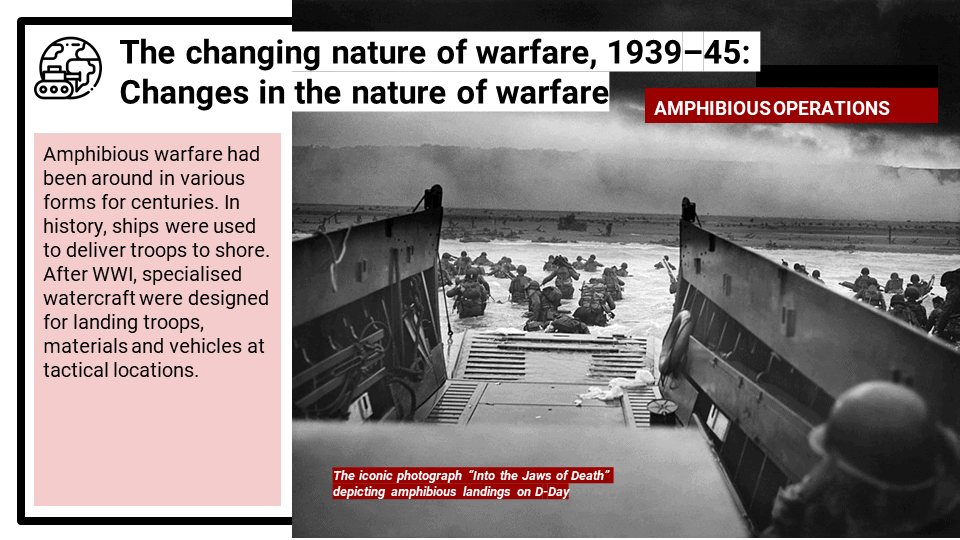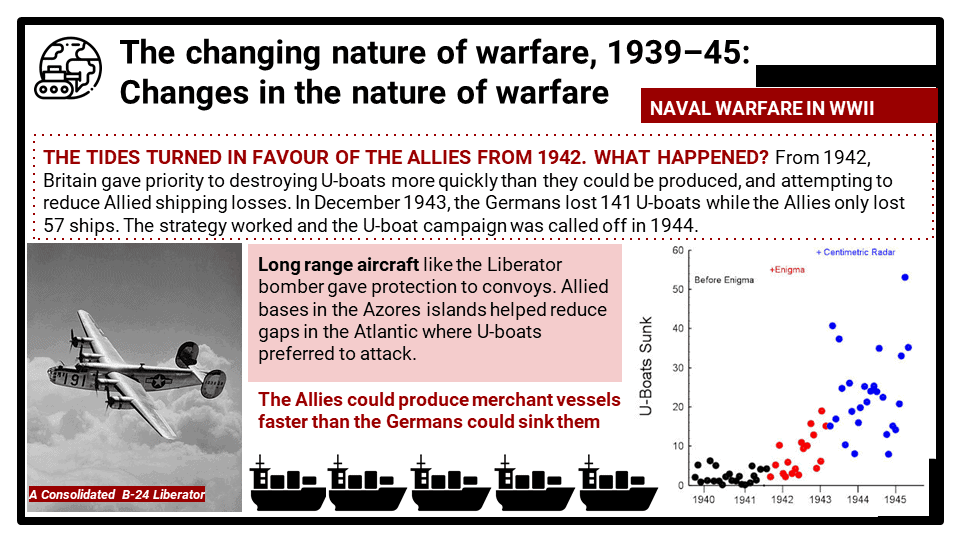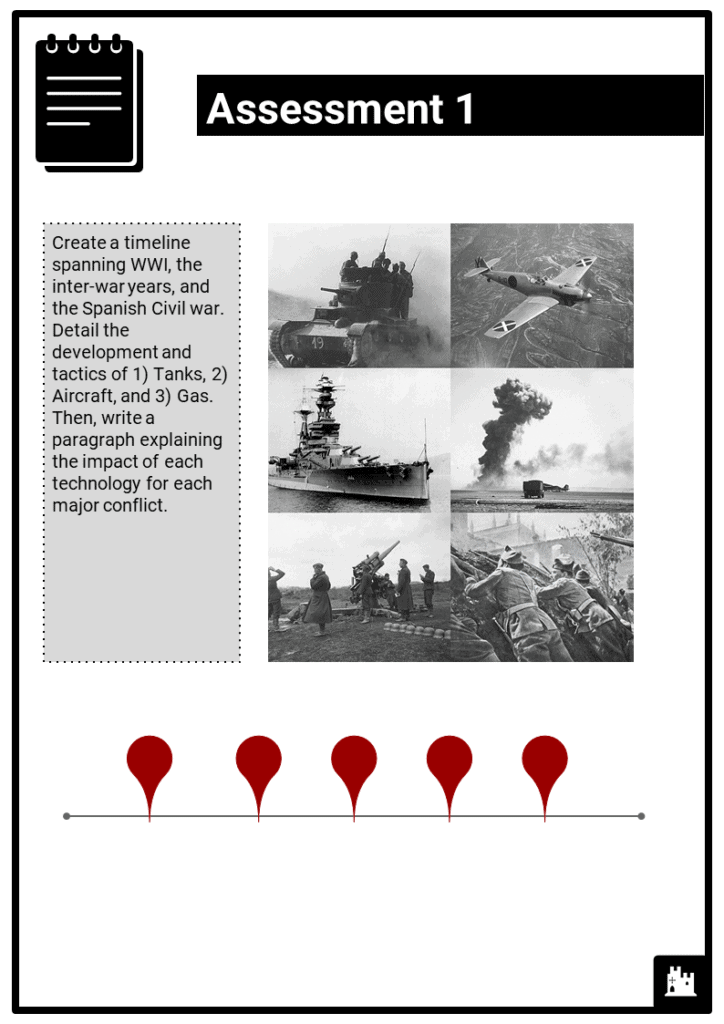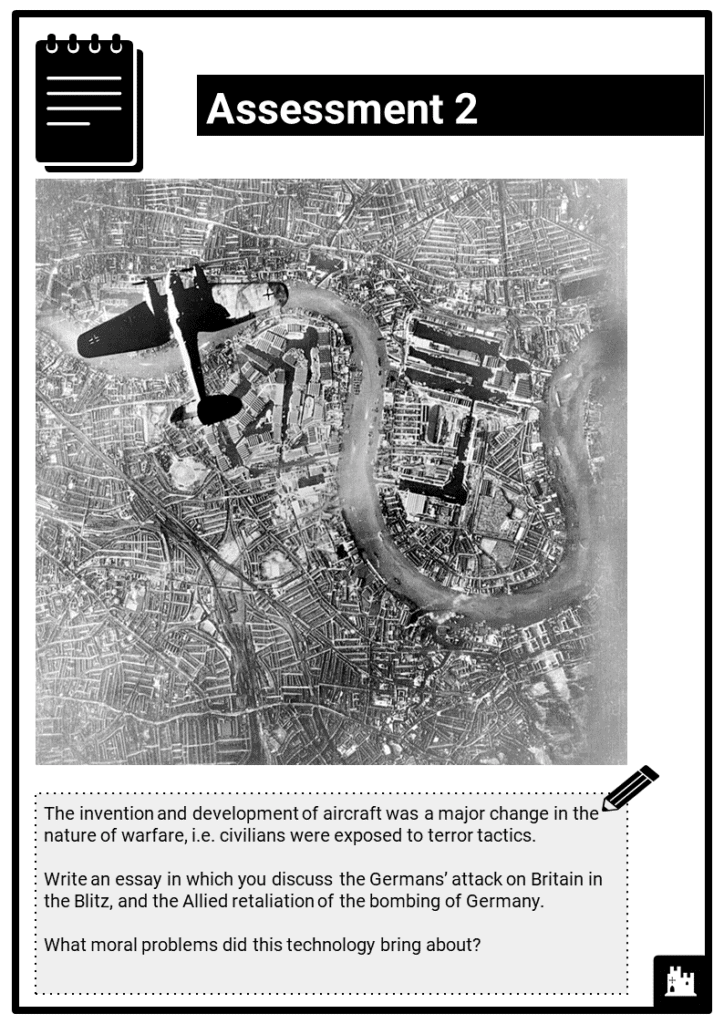Teach any Edexcel IGCSE module B6: The changing nature of warfare and international conflict, 1919–2011, no prep needed!
Do you want to save dozens of hours in time? Get your evenings and weekends back? Be fully prepared to teach any Edexcel iGCSE topic B6?
Every Edexcel iGCSE topic B6 is covered, and each module comes complete with:
Paper 2: Breadth Studies, The changing nature of warfare and international conflict, 1919-2011
What students need to learn:
- The changing nature of warfare, 1919–39
- Changes in the nature of warfare, including gas, tanks and heavy artillery. Emergence of submarines and military aircraft – fighter and bomber planes in conflicts in East Asia and Abyssinia. Use of guerrilla tactics in the Spanish Civil War.
- Changing methods of warfare by land, air and sea, 1939–45
- Blitzkrieg in Europe. The Battle of Britain, the Blitz, V weapons and the allied bombing of Germany. Developments in U-boat warfare in the Atlantic. Amphibious and paratrooper operations such as D-Day and Arnhem (1944–45). Civilian resistance movements, especially in France. The importance of aircraft carriers in the Pacific War (1941–45).
- New forms of conflict – nuclear and guerrilla war versus conventional war, 1945–75
- Reasons for dropping atom bombs in 1945. Key developments in the nuclear arms race (1945–75), the development and means of delivering other weapons of mass destruction, MAD theory and nuclear proliferation. Arms limitation and reduction talks. The continuing importance of conventional warfare, especially in Arab-Israeli conflicts. Superpowers and asymmetric guerrilla warfare, especially in Vietnam.
- Conventional war and the development of ‘new’ wars, 1976– 2000
- Continuing importance of conventional warfare, especially in the first Gulf War. The Falklands War and developments in aircraft carrier warfare. Nuclear submarines and the first Gulf War. Superpowers and guerrilla warfare, especially in Afghanistan. Further developments in nuclear warfare – ‘Star Wars’ and the end of the nuclear arms race.
- Changing methods of warfare at the beginning of the 21st century, 2000–2011
- Impact of terrorism, especially 9/11. New wars and high-tech warfare, the importance of ‘surgical’ airstrikes in the 21st-century wars in the Middle East. The development of drone wars in Pakistan and unmanned land vehicles in Iraq and Afghanistan.

